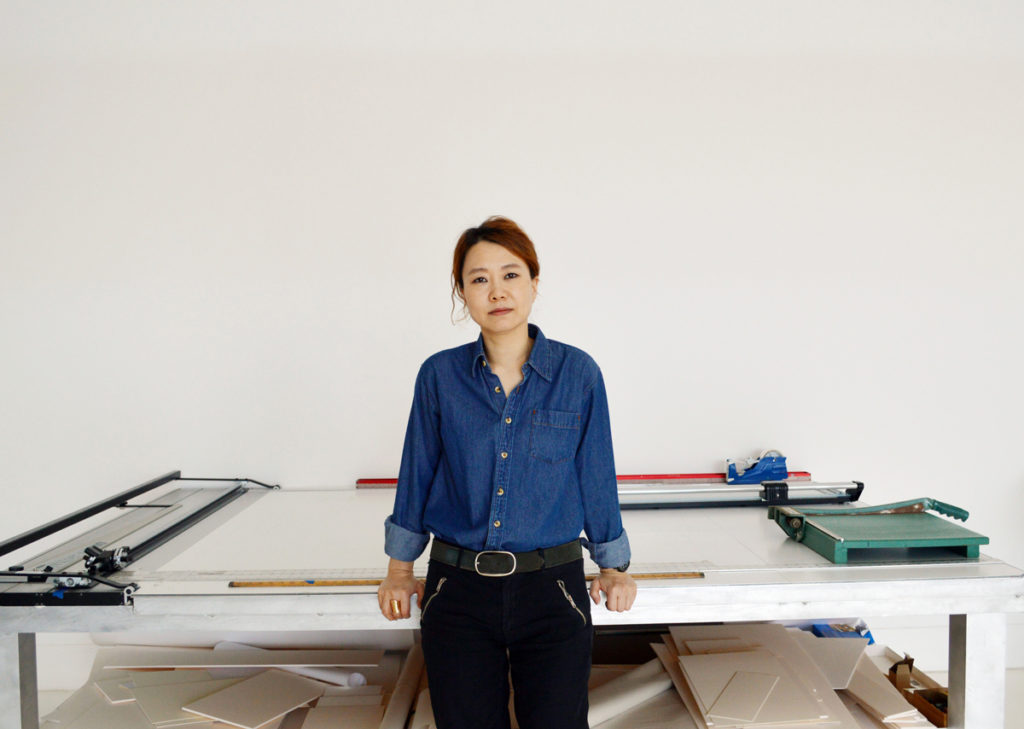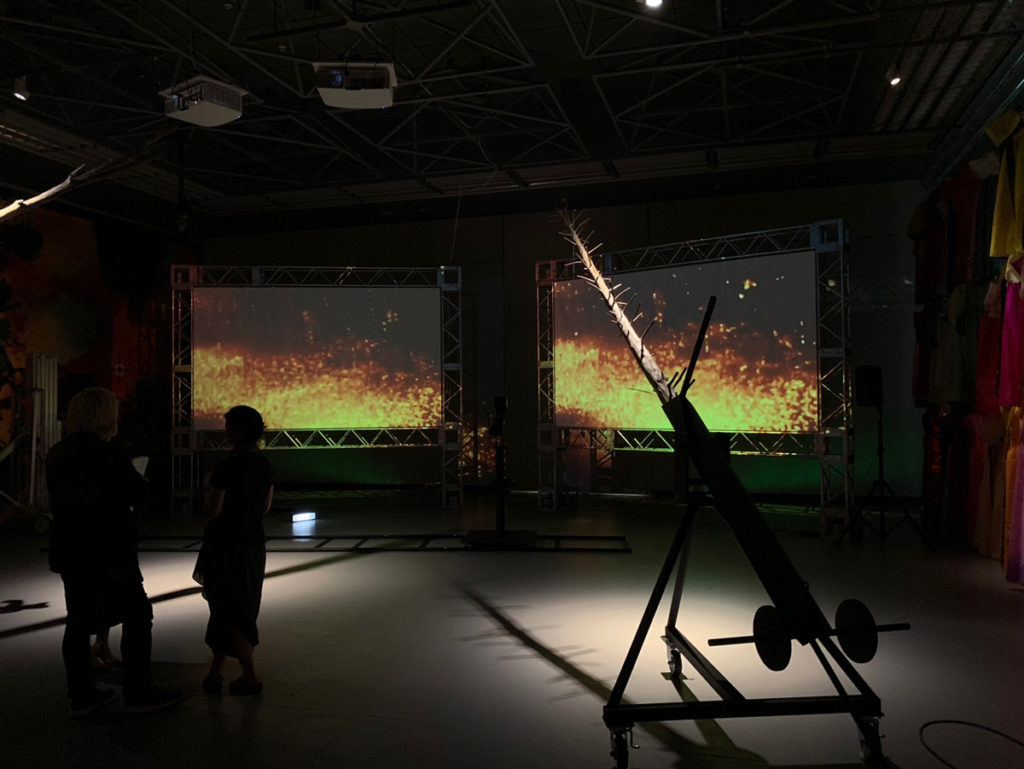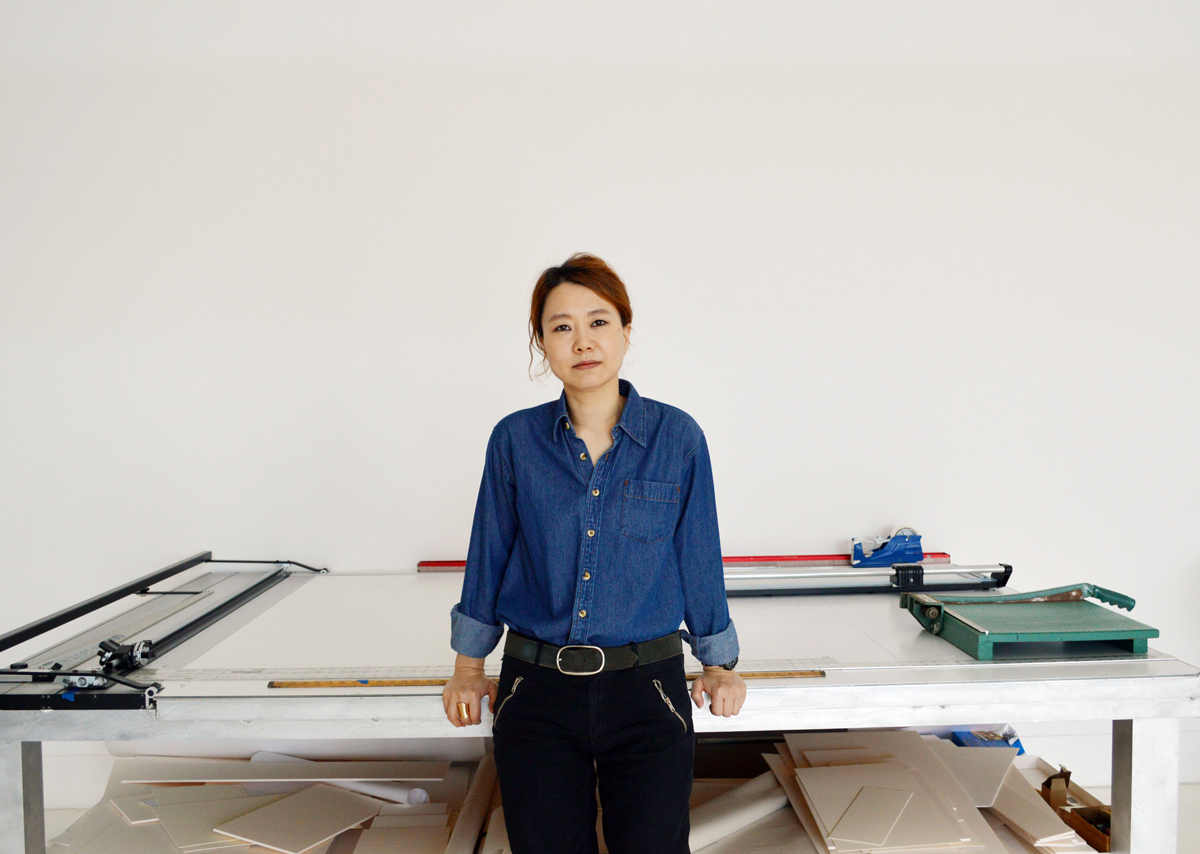[ad_1]

Minouk Lim.
LEILA MESDAGHI
Minouk Lim is a Seoul-based artist whose multimedia work looks at the various ways people can be marginalized, particularly by systems of government and various forms of mass media. Her work has been included in numerous international exhibitions, including the 2019 Biennale de Lyon, the 2016 Taipei Biennale, the 2016 Sydney Biennale, and the 2014 Gwangju Biennale.
Most recently, Lim’s work was included in the Aichi Triennale, which closed on Monday, October 14. The show has been the subject of controversy since it opened in August, when organizers decided to close an exhibition within the exhibition, titled “After ‘Freedom of Expression?’” That part of the Aichi Triennale looked at Japan’s history of censorship, and was shuttered citing threats against the exhibition and its staff. Among the most controversial works was Statue of a Girl of Peace by Korean artist-duo Kim Seo-kyung and Kim Eun-sung. That piece depicts ianfu, or comfort women who were drawn from throughout Asia and forced into sexual slavery by the Japanese Imperial Army. (It is still a controversial topic in Japan.)
Lim was among the artists who signed an open letter calling for the removal of her work in the exhibition, a new piece titled Adieu News, in a stand of solidarity with the censored artists. ARTnews asked Lim about her work in the exhibition and the controversy surrounding the entire Triennale.
ARTnews: What was your initial impression of the “After ‘Freedom of Expression?’” exhibition?
Minouk Lim: I found the implied message behind the “After ‘Freedom of Expression?’” exhibition deeply meaningful because Daisuke Tsuda, the Artistic Director [of the Aichi Triennale], comes from a journalistic background and has regrouped the works that have already been censored. Aside from works by Korean artists, including the Statue of a Girl of Piece, the exhibition actually included works by Japanese artists reflecting more direct criticisms [of censorship in Japan].
Another point that should not be overlooked is that the Aichi Triennale tried to balance the gender ratio of participating artists. The exhibition was not a display of political art as the Japanese right-wing party criticized, but instead showed how politics shook and hijacked the art. Rather, it was an event that exposed another side of the reality of Japan that we must continue to face.
AN: Did you anticipate that there might be backlash?
ML: I already anticipated that there would be backlash, as hate speech [has been] an important source of political power in Japan for a long time. However, I did not expect that the Mayor of Nagoya would demand the [exhibition’s] withdrawal directly and the Agency for Cultural Affairs would respond back to the artists by cutting subsidy as punishment. This result both surprised and disappointed me.

Installation view of Minouk Lim’s Adieu News, 2019, at the 2019 Aichi Triennale.
COURTESY THE ARTIST
AN: You were part of the group of 72 artists who said that the Aichi Triennale’s decision to remove the section of the show was not appropriate. What motivated you to sign the letter?
ML: I decided to close my exhibition space and sent my statement before we issued another statement with 72 artists’ signatures. It was on August 3 when the Triennale decided to shut down the “After ‘Freedom of Expression?’” exhibition. I sent an email to Daisuke Tsuda and Shihoko lida [Chief Curator of the Triennale], informing them that I would withdraw my works. They only reiterated to the press that they had to close the exhibition due to the threat of terrorism. However, I insisted that it is more dangerous to weave freedom of expression into a safety issue. I felt ashamed of the decision to take down the show. Thankfully though, many of the participating artists and Japanese colleagues expressed their support. They drew 72 signatures after deep agony and vigorous debate. Of course, I also signed it in solidarity. Moreover, 11 artists out of the total 72 artists took action by boycotting their works, including myself.
AN: Can you talk about your work in the exhibition? Does it also look at the complicated histories between Japan and Korea?
ML: For the exhibition, I presented a new scenographic space through a new body of work called Adieu News (2019), which includes a two-channel video of a newly-edited [version of] The Possibility of the Half (2012), as well as an installation featuring “fake-traditional” Korean dresses, Hanbok. By juxtaposing two funerals of the former supreme leader of North Korea, Kim Jong-Il, and that of the former President of South Korea, Park Chung-hee, the work shows how the media-driven emotions create a community and how it resembles an incomplete ruin. If the former Japanese Prime Minister, Yoshida Shigeru, argued that the Korean War was a gift from God to the Japanese, both funerals are activated as an impetus behind the Nationalism and division of the two Koreas.
AN: Does the controversy at the Aichi Triennale speak to larger issues going on in the world?
ML: The censorship issue of the Aichi Triennale is a problem for the art world as a whole. South Korea is a divided nation, and artists think that they all live by self-censorship. There still exists great risk in revealing certain truths throughout the world, which questions whether information should be censored. Personally, I feel the answer is not to suppress the freedom of expression. Art and freedom of expression are a struggle against the oppression of all kinds. There is vulnerability in truth, which is why we must protect it. Japanese intellectuals denounced the Aichi Triennial as the worst case of censorship in the country’s history.
I do not want to lose hope and feel strongly that Aichi can be reborn as a symbol of expressive and creative freedom. I felt such a strong sense of solidarity and connection with the 11 participating artists, including Japanese artists, who chose to withdraw their works in protest. I hope that this experience will not promote fear, but rather breed strength and security in anyone’s ability to effect change. This act of protest is not about Nationalism, or about being a Japanese artist or a Korean artist, but about the inherent right to find freedom in the act of creation.
[ad_2]
Source link

